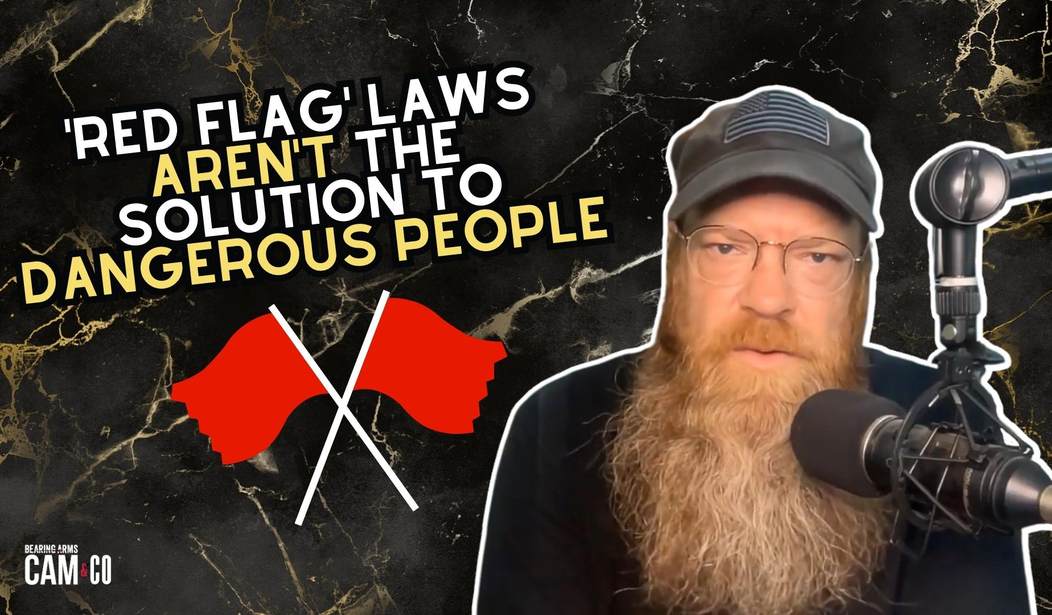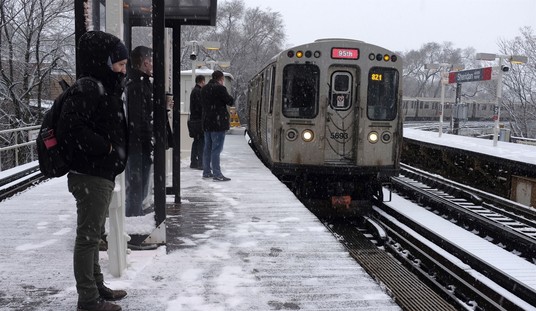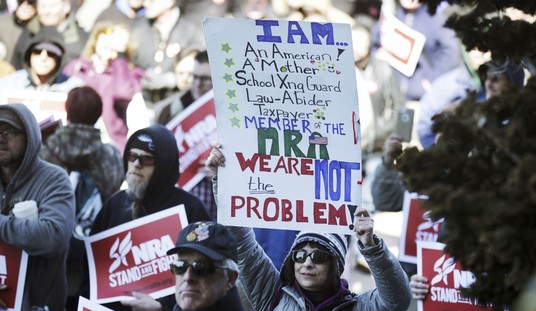Michigan Democrats are poised to enact a “red flag” law in the coming days, but we detail on today’s Bearing Arms’ Cam & Co, while Extreme Risk Protection Orders may be popular in public polling their gun-centric approach does nothing to treat or stop those who are a legitimate danger to themselves or others.
Michigan will be the 20th state to enact a red flag law once Gov. Gretchen Whitmer signs the legislation, which has already cleared both chambers of the legislature, and the Associated Press is one of several media outlets already boasting about the supposed benefits of the law, which will allow for lawfully-owned firearms to be confiscated for up to a year from those deemed by a judge to be a danger to themselves or others.
Touted as the most powerful tool to stop gun violence before it happens, an Associated Press analysis in September found red flag laws are barely used in the 19 states and the District of Columbia where they exist. Firearms were removed from people 15,049 times since 2020, fewer than 10 per 100,000 adult residents, according to the analysis.
The number of extreme risk protection orders has increased from 95 in 2021 to 584 in 2022, according to data released from the New York State Police. The 283 in the first three months this year sets a pace for about 1,100 – a 1,057% increase.
In August 2021, then-Gov. Andrew Cuomo issued a gun violence state of emergency. Gov. Kathy Hochul issued an executive order in May 2022 that directed the state police to file more temporary extreme risk protection orders.
Since then, two court rulings found the extreme risk protection orders to be unconstitutional.
In December 2022, state Supreme Court Judge Thomas Moran ruled that the extreme risk protection order was unconstitutional. He said the order didn’t provide the “same constitutional protections” as the state’s mental hygiene law.
Last month, state Supreme Court Judge Craig Brown ruled the temporary extreme risk protection order was unconstitutional. The ruling noted that there wasn’t a “requirement of any input from a medical or mental health expert” in the extreme risk protection order, while the mental hygiene law did require a physician’s opinion.
A major shortage of child psychiatrists is impacting Michiganders. According to a study from the American Academy of Child and Adolescent Psychiatry, there are 49 counties in Michigan without any child psychiatrists.
Clinton County only has one child psychiatrist.
Eaton and Jackson counties only have two child psychiatrists each.
Ingham county has slightly better numbers, with 14 child psychiatrists, however, 14 is still considered a shortage when considering population.
Most of northern Michigan and the Upper Peninsula does not have any child psychiatrists.
Michigan has been forced to close 77 beds at state-run psychiatric facilities since April, largely because the system lacks enough staff to care for severely mentally ill patients.
The situation may get worse in the near-term: Health officials say hundreds of job openings have failed to draw applicants.
That has reduced the number of beds available at state facilities for severely ill patients by about 10 percent. The largest cut was at a facility in Kalamazoo, which has taken 50 in-patient beds offline in recent months.
… Since June of last year, the average number of patients at the state’s five psychiatric facilities declined from 700 to 628 by the end of August, the most recent numbers provided by the state. That’s largely due to the closure of 70 beds at two state facilities, according to records and interviews with the Michigan Department of Health and Human Services.
Again, this is a complicated problem, but addressing it would go much further towards dealing with and treating dangerous individuals than any “red flag” law currently in place or awaiting a governor’s signature. As we’ve already seen in states like California, New York, and Colorado, when ERPOs fail to bring down the rate of violent crime or suicide, lawmakers inevitably respond by weakening what little protections were originally in place; typically by expanding the number of people who can petition the courts in the hopes of generating more ERPO orders. Ultimately “red flag” laws are still predicated on the false premise of banning our way to safety, and their myopic focus on the firearm and not the actual dangerousness of an individual ends up putting the public at risk… not to mention potentially violating the civil rights of those subject to a “red flag” order.









Join the conversation as a VIP Member